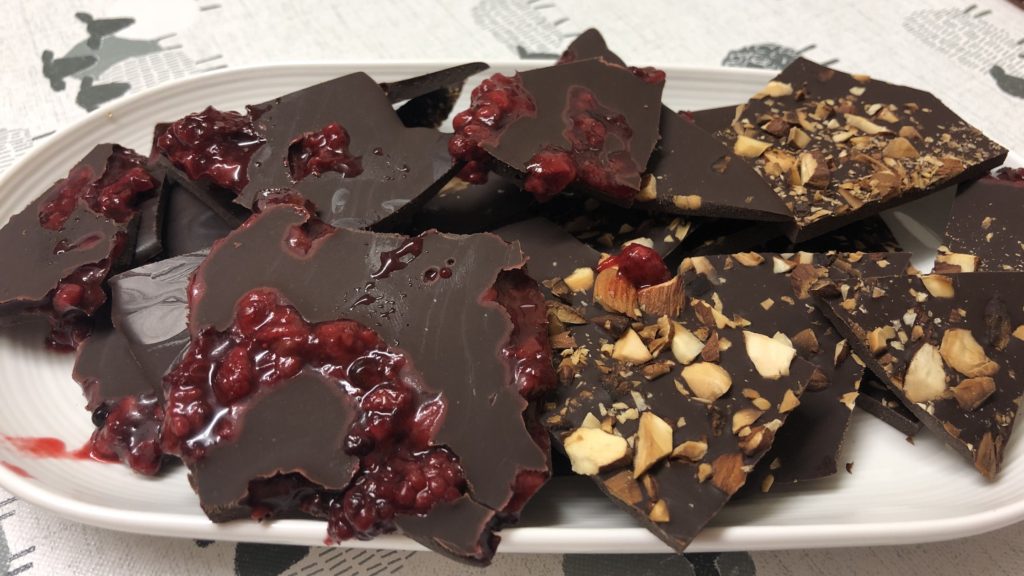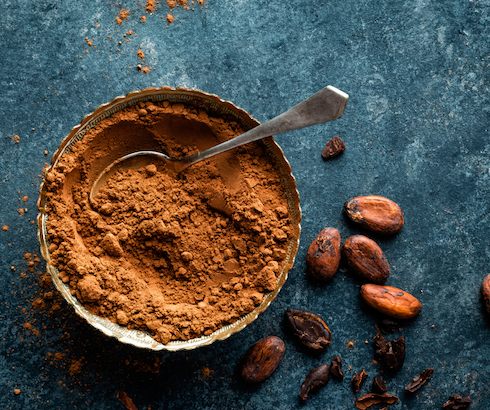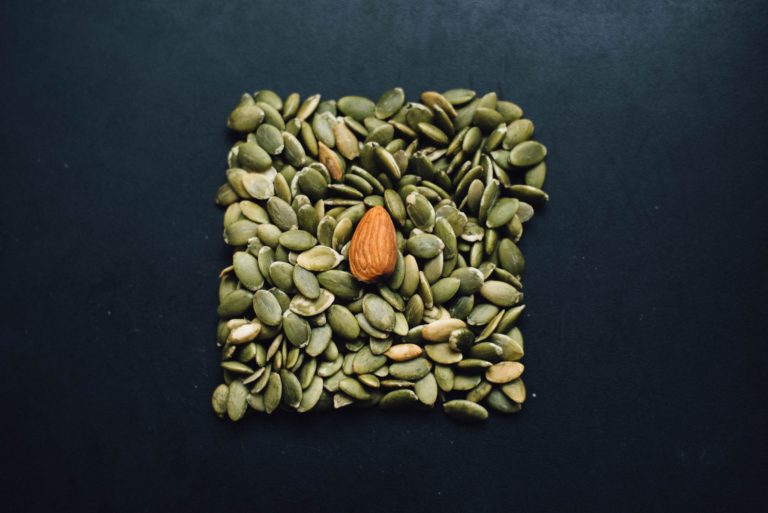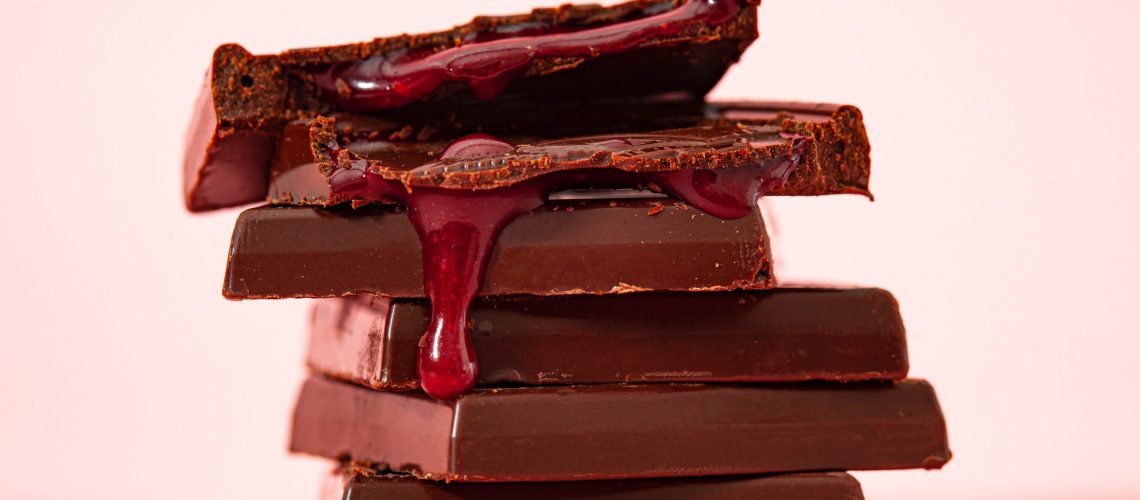
Who loves chocolate?! Me!!! But….only the dark stuff! None of this milk or white chocolate – they are just too sweet for me! What about you? Did you know that the right chocolate is good for you, as it is rich in magnesium and stress and immune-boosting!? Do you know why magnesium is so essential for you and your Endometriosis, fertility and health?
Now we are all stuck at home because of COVID-19, it is the perfect time to try out new skills and this is a GREAT ONE to try! All you need is Amazon if you don’t have the ingredients!
There are some links within this blog to items I personally use and recommend. People ask me what products I use and this is the easiest way. These links do mean I can earn if you buy through them and this helps me to finance detailed articles like these. I do not add anything I do not use or would not recommend. I buy most of my speciality ingredients on Amazon (ever since I lived in Jordan), as that was often the only way to source many things. It does mean you can get them during this lockdown! Silver lining and all that!
My Chocolate Needy Gremlins!
First I will explain why I am writing this blog article! The other night whilst on a self-imposed lock-in due to COVID-19, my little one was sick (only teething and a cold) and my husband was away. My period started and I was in desperate need for chocolate or rather I had a magnesium craving. Ladies, I know you understand this! I found that I had no chocolate in the house! Often I will add chocolate powder to yoghurt if I don’t, but I had no yoghurt! I then realised I had all the ingredients to make my own chocolate and so I did!
I have made it before my little one came along but I had completely forgotten since then – just too busy I suppose! It is really easy, and simply delicious and soooo good for you! So you can either find out why dark chocolate is good for you or just skip straight to the video and recipe!

Not All Chocolate Is Good!
Chocolate can come in many forms, tastes and colours – there are some good and many bad. Most shop-bought chocolate brands contain many more ingredients than just cocoa powder. Some of the nasties to look out for include high fructose corn syrup, hydrogenated oils, soy lecithin (very bad for Endometriosis – you want sunflower lecithin instead), artificial flavourings, and carrageenan (difficult to digest). I avoid soy lecithin like the plague, as it causes terrible cramps – the only problem is that means most chocolate, even nice chocolate is therefore out of bounds. I tend to stick to dark chocolate (70% plus) and with no flavourings.
My final point is that the sugar content in many chocolate bars is sky high, which is a problem. For example, there is 22 grams of refined sugar in a 1/3 of a Cadbury’s chocolate bar, which is your daily allowance of sugar!
If you are going to buy shop-bought chocolate the brands (which of course you are!), the ones I find good are: Lindt, such as the Lindt 85% Dark Chocolate, most Green and Blacks (but not always), for example, their Orange and Almond and Raspberry and Hazelnut are amazing! But wait, the ultimate luxury chocolate brand I have found recently is Booja Booja, their luxury truffles are to die for! My mother bought me some at Christmas and I was in heaven – I didn’t share one single one! They are gluten free, soy free, dairy free and vegan and the ultimate luxury – if your loved one needs treating then buy these!
Cocoa vs Cacao powder
Did you even know there was a difference? Well there is. There is a great detailed description of the difference by Creative Nature.

Cacao is the one you want. This is the raw powder of the cacao bean, which is cold-pressed and a powerful superfood rich in vitamins and minerals, including rich in magnesium. It is supposed to have the highest anit-oxidants of all foods – and it is these that help boost your immunity [1]. So with COVID-19, you want to be switching to cacao powder now! There are lots of good brands out there, these are the ones I use: Indigo Nutrition, Sevenhills Superfoods, and Naturya.
Cocoa powder is highly processed and often contains sugar and processed fats – this form does not contain any of the goodness I talk about in this article! So why not change now, they are completely inter-changeable – yes it is more expensive but then you don’t need to feel guilty when you make your next chocolate cake – as its good for you!!
Why We Need Magnesium
Magnesium is critically important for our bodies, with it being the fourth most abundant mineral. It supports over 300 enzyme reactions in our bodies, from energy metabolism, reducing aches and pains, anxiety, fatigue and stress to supporting our immune system (which is critical at the moment with the COVID-19 virus).
Benefits of magnesium
Magnesium is like a natural tranquilliser to our body. It helps to soothe our nerves, improve our sleep and reduce pain and cramps. These are all things women with Endometriosis desperately need.
Magnesium has so many benefits, here are some of the key ones:
- helps regulate hormones and so helps with your mood,
- critical in detoxing the body,
- helps with incontinence,
- good for pregnant women (up to 21 weeks), and
- helps with bone health.
Reasons for Deficiency
The only thing is that in today’s world the majority of us are depleted in magnesium and don’t even realise it. Would you believe it is estimated that 75% of western women are thought to be depleted and many do not even know it [1]! During times of crisis our bodies ‘dump’ magnesium. In days gone by, when life wasn’t stressful on a day to day or even on an hour by hour basis as it is today, we had the time to restore our magnesium levels naturally so they could cope with the natural requirements.
Today however, our stress levels are high, causing us to lose magnesium regularly. Coupled with the fact that our soils are seriously magnesium depleted, our foods are therefore magnesium poor (this is the norm unfortunately not the exception). There is no wonder so many of us end up deficient in this important mineral. In addition, consuming poor quality foods, such as alcohol, coffee, processed and fast foods, as well as having soft water, taking calcium supplements, heavy menstruation, poor gut health, sweating, parasite infections, the contraceptive pill, laxatives, diuretics and other medications can all result in a magnesium deficiency.
Finally, if you are nutrient deficient in Vitamins B6 and D (both essential for your sex hormones and reproductive health) you will have difficulty in absorbing magnesium. It is also critical to have a 1:1 ratio of calcium to magnesium.
Endometriosis, fertility and magnesium
As you can see, women with Endometriosis suffering from heavy bleeding and years of taking the pill and medications to control pain and cramps, are almost guaranteed to be magnesium deficient.
It is important to understand that nutrients and minerals never work in isolation and getting the right mix of supporting nutrients is key to thriving with Endometriosis and having optimal fertility.
Signs of deficiencies
So how do you know you are deficient in magnesium? Well, there are a number of symptoms associated with Endometriosis that indicate that you could be deficient in magnesium, these are:
- twitching (esp. eyes!)
- menstrual / leg cramps
- sleeping and insomnia
- struggle to relax
- anxiety
- constipation / diahorrhea
- mood swings
- headaches / migraines
- chronic fatigue
- PMS
- aches and pains
Do you have any of these? I didn’t realise how deficient I was until I saw this list and wow I had almost all of them!
What amazed me more, as I was skeptical back then, was the impact and reduction in these symptoms once I increased my magnesium intake.
Sources of Magnesium
There are a few different ways you can choose to increase magnesium in your body. The best and first way is through food, and one that you can ensure on a daily basis. For some people though, if your digestive system is in a poor condition, you may find your absorption is poor. So until you heal your gut you may need to look at additional sources to food.
In addition, if you are seriously depleted it is worth trying to supplement through non-food sources until your levels are back up. After which, you can try to maintain your levels using food – though this will entirely dependent on your lifestyle, stress, and medications and the source of your food.
Food sources
If you already eat a balanced diet, then you may already be getting plenty of magnesium-rich foods, which include whole grains (oats, wheat germ, buckwheat, barley, brown rice), fish, sea vegetables (kelp), avocados, dark leafy greens (kale, beet and collard greens), nuts (almonds and walnuts) and seeds (pumpkin seeds) fruit (figs and dates).

These foods used to be commonly consumed around the world, but an increase in both food processing and the availability of fast foods with added fats and sugars has had its impact. Whole and unrefined foods high in magnesium are becoming increasingly rare in the modern diet. One thing to note, is to choose to eat locally sourced foods (to ensure freshness) and ones that are grown using old small scale farming methods that are less likely to deplete the soils as badly as mass farming.
You will be pleased to know that one of the highest sources of magnesium is raw cacao! You can use it any way you like, from smoothies (delicious with banana, cinnamon, vanilla, and almond milk) to making your own chocolate – which is why this blog article may be just what you need!
Supplement sources
If you find you are still deficient even with a super healthy diet, then you could try to use your skin as a method of absorbing the magnesium. This is a fantastic method and extremely effective – did you know that your skin is the largest ‘organ’ in your body?!
I was lucky enough to live 45 minutes from the Dead Sea in Jordan when I started my Endometriosis healing journey. Bathing in the waters really is healing and you simply absorbed the magnesium and other minerals. People travelled from all over the world to heal their ailments from eczema, psoriasis to auto-immune conditions. Some countries even paid for patients to go there!

Obviously most people cannot go to the Dead Sea, so the next best option is to use a combination of bath salts and oils that you either soak in the bath with or spray on your skin. Both are very effective – but you do need to be careful on the source and form of magnesium.
I love the BetterYou Original Magnesium Oil Spray and bath salts as well as, the Ancient Minerals oil and bath salts as they are not heat-treated and are very pure. Do be careful of cheap bath salts using magnesium oxide – they can cause diarrhoea.
You could also use a good quality supplement, I absolutely love Wild Nutrition’s Bespoke Food-Grown Magnesium. They are a unique UK company that have developed supplements derived from food using a functional medicine approach (i.e. not synthetic forms). This means your body recognises these supplements as food and are therefore exceptionally well absorbed and in essence more effective than many synthetic alternatives. If you work with me as a client I work closely with Wild Nutrition as a practitioner. If you use this link you can get £10 off your order!
How To Make Your Own Dark Chocolate
Right enough about the why, now onto the how! I have made a quick video on how to make it – hopefully, this shows you how easy it was!
Using fruit and nuts
I did use fresh raspberries rather than dried as that is what I had at the time of my desperation desire for chocolate! It did mean the chocolate was wet – so I would recommend using dried fruit. You could use raisins, apricots, raspberries, goji berries – anything you fancy! You could also use ground ginger with or instead of vanilla and then add stem ginger as I did with the nuts / raspberries. This is what I shall be doing next, but I will have to wait until tomorrow as I have run out of cacao powder otherwise I would have made it already!!
You could use any type of nuts or seeds, such as almonds, hazelnuts, walnuts, brazil nuts (great for selenium but be careful not to eat more than 4 a day) – just experiment!
Honey
You can use whatever honey you like, I didn’t quite have enough of one type and so used three different ones. Two of them were delicious local ones I had bought in Greece on holiday.
Like Cacao powder, honey is also not all made the same. I am sure you have heard about ‘raw honey’, but have you wondered what the difference with ‘regular’ honey is?
Raw honey is taken straight from the hive and is only strained to remove the wax and dead bees. This means all the health benefits remain – in that it is more nutritious and contain lots of polyphenols – I will not go into it more than this as that is another blog article completely! Regular honey is pasturised (heat treated) and filtered, and some producers even add sugar and sweetners to make them cheaper!! Basically, if you can use local raw honey, your chocolate will have double the benefits!
Silicone moulds
If you do not have any silicone moulds you can just use a baking tray as I did. Though, check if your ice tray is silicone as often they are these days. If you want to make cool shapes, so your children can help make them (and eat them!), then I bought these ones when I was making homemade jelly sweets (another recipe for another day!). There are though so many different types on Amazon!
Homemade Dark Chocolate
Ingredients
- 1 cup cacao butter
- 1 cup cacao powder
- 1/3 cup honey less or more to taste
- 1 tsp vanilla extract
- almonds (optional) chopped and toasted
- dried raspberries (optional)
Instructions
- In a glass bowl add the cacao butter.
- Place the glass bowl over a pan of simmering water (about an inch - make sure it is not touching the glass bowl).
- When the cacao butter has completely melted, add the cacao powder and vanilla extract (and any other flavouring you might want to use) and stir in well.
- Allow to slightly cool, then add the honey. The consistency of the chocolate should be the same as the honey. If you are using raw solid honey - then add this to the cacao butter and melt together.
- Stir well until smooth and shiny - do not add any water (even a drop) as this will make the chocolate go grainy.
- Pour the chocolate into the moulds, or plate, or onto a baking sheet (lined with natural parchment paper).
- You can add any flavourings e.g. toasted almonds or other nuts, or dried fruit e.g. raspberries on top of the chocolate, or in the bottom of the mould (depending on where you want it).
- Allow to cool - either for several hours at room temperature, or in the fridge or freezer (if you are in a hurry)
- You can keep these at room temperature for a week, longer in the fridge and you can also freeze them, which is a great way of stopping you from eating them all!
I hope you have as much fun as I do making these, and double the amount eating them – though do not eat them all at once as they then are not so good for you!
I would love to know how you get on and what flavours you try! Just comment below.
Did you like this article and recipe? If you would like to know more about how you can nourish and heal your body from Endometriosis naturally and prepare for conceiving, then pop over to my Facebook page and join my FREE and PRIVATE group: Thrive and Conceive Naturally with Endometriosis.



